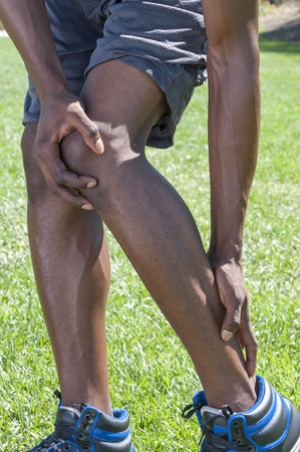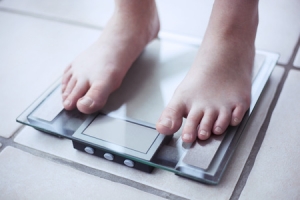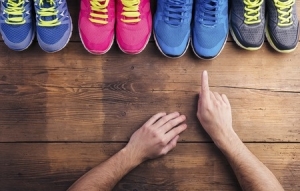Connect With Us
Blogs
Displaying items by tag: Flat Feet
Dealing with Calf Pain
One of the trickier areas to diagnose that we see at Superior Foot & Ankle Care Center is pain in the calf. This symptom can point to a variety of disorders, some more serious than others. The only way to definitively find out what’s causing the pain is to make an appointment at our Long Beach office. Our podiatrists, Dr. Victoria Foley and Dr. Constance Omelas will do a complete lower extremity examination and also get your medical history to help track down the source of calf pain. Some possibilities include:
Exercise or Injury—the most obvious and least threatening cause of calf pain is muscle pain due to exercise. If you have recently started a new fitness routine or sport, some soreness may be normal. Pain that lasts more than a few days, however, or that is severe requires medical attention. Injuries to calf muscles or to the Achilles tendon are possible in cases where patients do too much too soon or suddenly ramp up their exercise program.
Dehydration—did you know that most of us are walking around in a state of chronic dehydration? Unless you drink half your body weight in water each day, you may be among the dehydrated. With extra sweating in the summer months the risk increases. One of the signs of dehydration is cramping in the calf. Sometimes cramps will occur at night and wake you up.
Other Foot Disorders—sometimes a pain in the calf is not about the calf at all. It can be a symptom of a foot or ankle problem such as flat feet or Equinus.
Deep Vein Thrombosis (DVT)—this is a blood clot that forms deep in the calf. It is more common if you have had surgery recently or been on an airplane. This is a potentially dangerous condition and if you believe there is any possibility of DVT you should contact the foot doctor immediately.
Peripheral Vascular Disease—poor circulation to the legs and feet, which are characteristic of this disease (and other conditions, such as diabetes, that affect the circulatory system), can result in calf pain, especially when you sit with your legs up or when walking.
If you have been experiencing consistent calf pain, contact us by calling: 562-420-9800.
Foot Health and Pregnancy
At Superior Foot & Ankle Care Center pregnant women will often come to our Long Beach office with foot concerns that they didn’t expect. Pregnancy changes your body in various and dramatic ways and your feet are not left out of the fun! Here are some foot and ankle conditions you may experience during the course of your pregnancy:
Ankle Turns/Sprains—to prepare your body for pregnancy and the passage of a baby through the birth canal hormones are released which help ligaments relax. Since these hormones cause all the ligaments in your body to relax you may find your ankle giving way more readily. This issue is made worse by the shifting of your center of gravity as the baby grows.
Swollen Feet and Ankles—retaining water is a normal (if uncomfortable) part of pregnancy. This extra fluid tends to accumulate in your feet and ankles. This can make feet feel sore and tired. Cut back on salt, drink plenty of fluids and be sure to elevate your feet for some time every day to help combat the swelling.
Foot pain—excess weight, even though temporary, can cause pain in the arch of your foot and even cause flatfeet. Heel pain is also common. Be sure to wear shoes that have extra cushioning and shock absorbing soles. Look for styles that provide good arch and ankle support as well.
Pregnancy can also exacerbate existing foot conditions, particularly those affected by weight or involving inflammation. Our podiatrists, Dr. Victoria Foley and Dr. Constance Omelas will evaluate your feet and ankles and help you find ways to keep existing problems in check. They will also discuss ways to prevent the other podiatric problems that pregnancy can bring and offer safe suggestions for relief of any foot pain or discomfort you encounter. Contact us for an appointment by calling: (562) 420-9800.
What You Eat Matters to Your Feet
Did you know that a significant number of foot and ankle conditions are caused or made worse by being overweight? Plantar fasciitis, arthritis, flatfeet, tendonitis and stress fractures all have excess weight as a risk factor. In addition, carrying more pounds than you should can affect your knees, hips and back which can then lead to secondary foot problems due to changes in your gait to compensate for pain in these other parts of your body. Lastly, overweight patients are more likely to develop high blood pressure, heart disease and diabetes—all of which pose serious medical threat to your feet (not to mention the rest of your body). March is National Nutrition Month and here at Superior Foot & Ankle Care Center we would like to offer these tips to improve your diet and attain or maintain a healthy weight:
- Let’s eat in—cooking meals at home puts you at a nutritional advantage. You can control the ingredients and calories in the dishes you prepare. Good food doesn’t have to be complicated. Learn some simple dishes and up the flavor quotient with herbs, spices and citrus fruits instead of fats and creamy sauces. Choose broiling or grilling over frying as your cooking method.
- Portions matter—how much you eat is almost as important as what you eat. Ask your doctor what amount of calories you should be consuming everyday to maintain a healthy weight. Check the serving sizes in the nutrition facts for the foods you eat and adjust to your daily intake if necessary. Try using a smaller plate to automatically scale back on portions.
- Variety is the spice of life—mix up your menus. Be sure to include a colorful array of different fruits and vegetables each week. By doing so, you’ll go a long way toward ensuring that you are getting all the different nutrients you need. Explore food from different cultures.
- Add some action—try to be physically active for some part of every day. This doesn’t mean you have to go to the gym or play on a team. Take the stairs, pull weeds, walk while you talk on the phone in your office—just get moving. This will help burn calories and increase fitness. Exercise can also help fight heart and other disease.
Our podiatrists, Dr. Victoria Foley and Dr. Constance Omelas, believe in a total body approach to good health. If you have questions about your weight and your feet or are experiencing pain or discomfort in your feet currently, contact our Long Beach office for an appointment.
How to Select the Proper Shoe for Running and Walking
When it comes to running or walking for exercise, we at Superior Foot & Ankle Center believe that the most important piece of equipment required is a good shoe that is properly fitted for your individual foot. You do not need different shoes for running and walking. Running shoes usually have more shock absorption and are fine for walking.
Below are some tips to help you choose the right shoe and get a good fit:
- Start with an appointment with one of our podiatrists, Dr. Victoria Foley or Dr. Constance Ornelas. The right shoe for you will depend on your foot type. If you have a high arch or you wear a custom orthotic device, a cushioned neutral shoe is best. For someone with flat feet, a stability shoe is recommended. See our approved shoe list for specific brands and styles. Your foot doctor can make suggestions for particular styles or features if you have a toe deformity or other foot or ankle condition that will help protect the area and make running or walking more comfortable.
- Get professionally fitted by a sports shoe expert. Most people have two different size feet. It’s essential to buy shoes to accommodate the larger foot. There should be a half-inch of space between your longest toe and the front of your shoe. A majority of people wear shoes that are too small for their feet and this leads to injury and deformity.
- Wear the socks you will run or walk in when you go to try on shoes. We recommend a cotton blend or a sock with CoolMax. Bleach white socks to prevent athlete’s foot.
- To avoid blisters, be sure that the heel of the shoe fits snugly and that the foot doesn’t slip when you walk. Also, run your hand around the inside of the shoe to check for rough stitching or bumps that can cause friction and result in a blister.
- Take your time when trying on shoes. Walk around the store for several minutes. Many running shoe stores will have a treadmill so that you can try running in the shoes as well.
- Remember to replace running/walking shoes after approximately 400 miles. Even good shoes lose their supportiveness once they are worn out and wearing them can present an increased risk of injury.
If you have more questions about running or walking and your feet, contact our Long Beach office by calling us at 562-420-9800.
How to Care for Diabetic Foot
Millions of people are affected by diabetes each year. Diabetes damages blood vessels in all parts of the body, especially the feet. The legs and feet may develop slow blood flow, which causes neuropathy, or nerve damage. Once a diabetic patient develops neuropathy, it is important that the feet are well taken care of. Otherwise, the lower limbs may have to be amputated. This only happens in drastic cases, but it shows how seriously diabetic foot care should be taken.
It is very important to always wash and dry the feet thoroughly, especially in between the toes, if you’re a diabetic. Secondly, examining your feet and toes for redness or sores must be done, even if you do not feel pain. You may also want to examine your feet from the bottom. Try to avoid wearing colored socks to prevent infections that may occur from the dye. Well-fitting socks are also highly recommended.
A diabetic’s physician should always monitor their blood levels to test how well blood sugars are being maintained. In addition to giving advice about everyday eating habits and foot care, a physician may prescribe medicine to help with the diabetic patient’s neuropathy. It is also advised to see a podiatrist if experiencing any feet conditions. Toenails may also need to be taken care of by a podiatrist. This prevents patients from cutting too deeply around their cuticles, which can lead to infection.
A person can take care of their feet at home by following the instructions of their physician. Using creams on one’s feet is also an effective way to heal dryness. Proceed with caution when using tools to remove calluses, as severe diabetics may not be able to feel pain on their feet. If any complications arise do not hesitate to contact a podiatrist.
On a daily basis, diabetic feet must be checked. If you are ever concerned about something, contact your health care professional. You never want to wait until a wound becomes too severe to treat. If left untreated, gangrene may develop. Gangrene is a serious infection that can lead to sepsis or amputation. It is also important for diabetics to be on the lookout for ulcers. Ulcers are sores that develop from tissue loss on the skin. They can be quite painful and require intensive treatment. Early treatment and everyday inspection are imperative to staying healthy.




